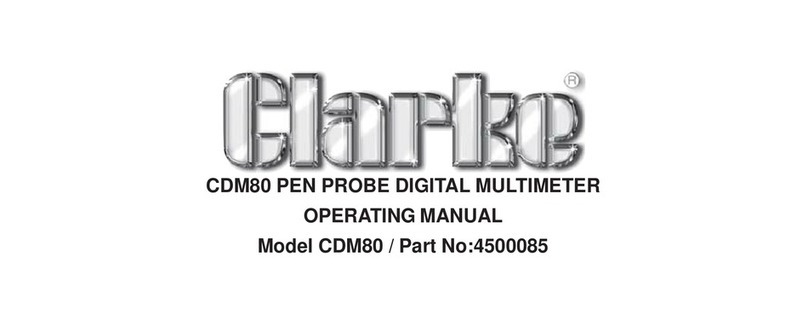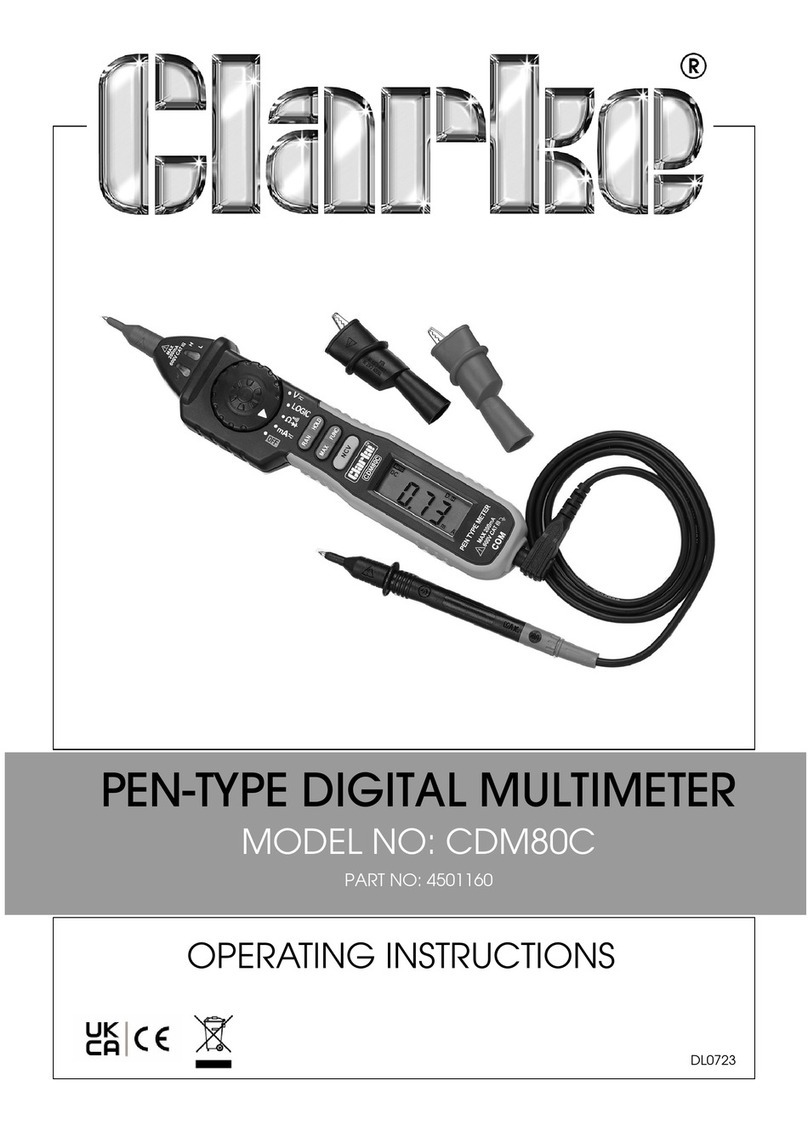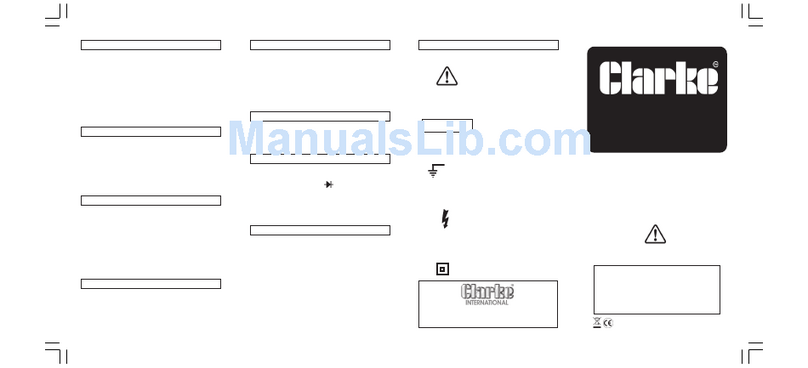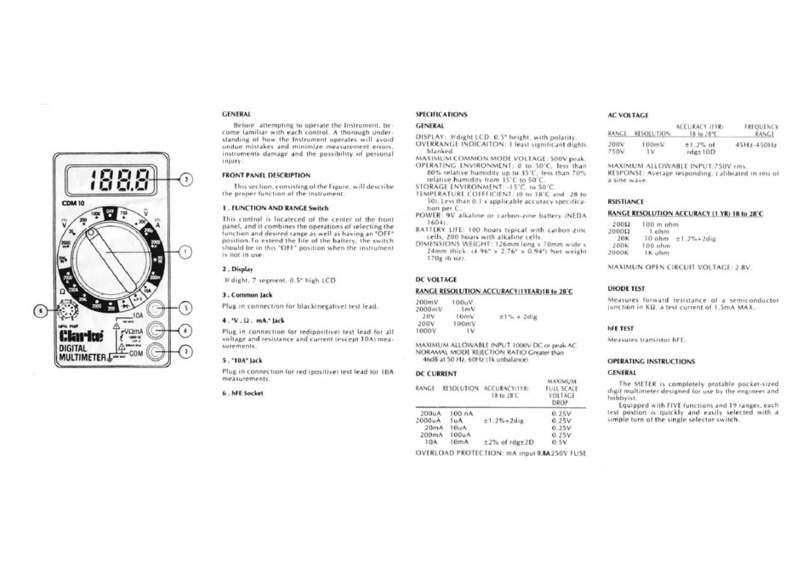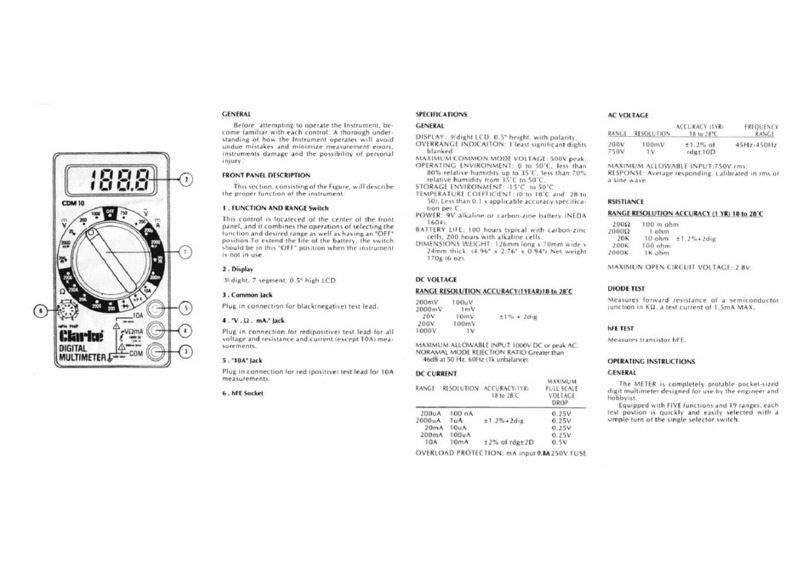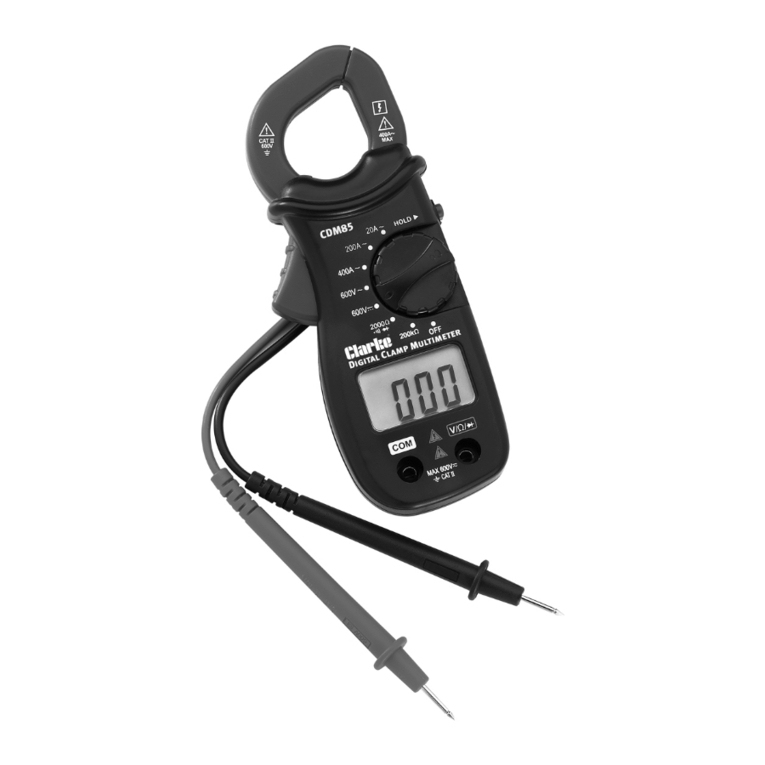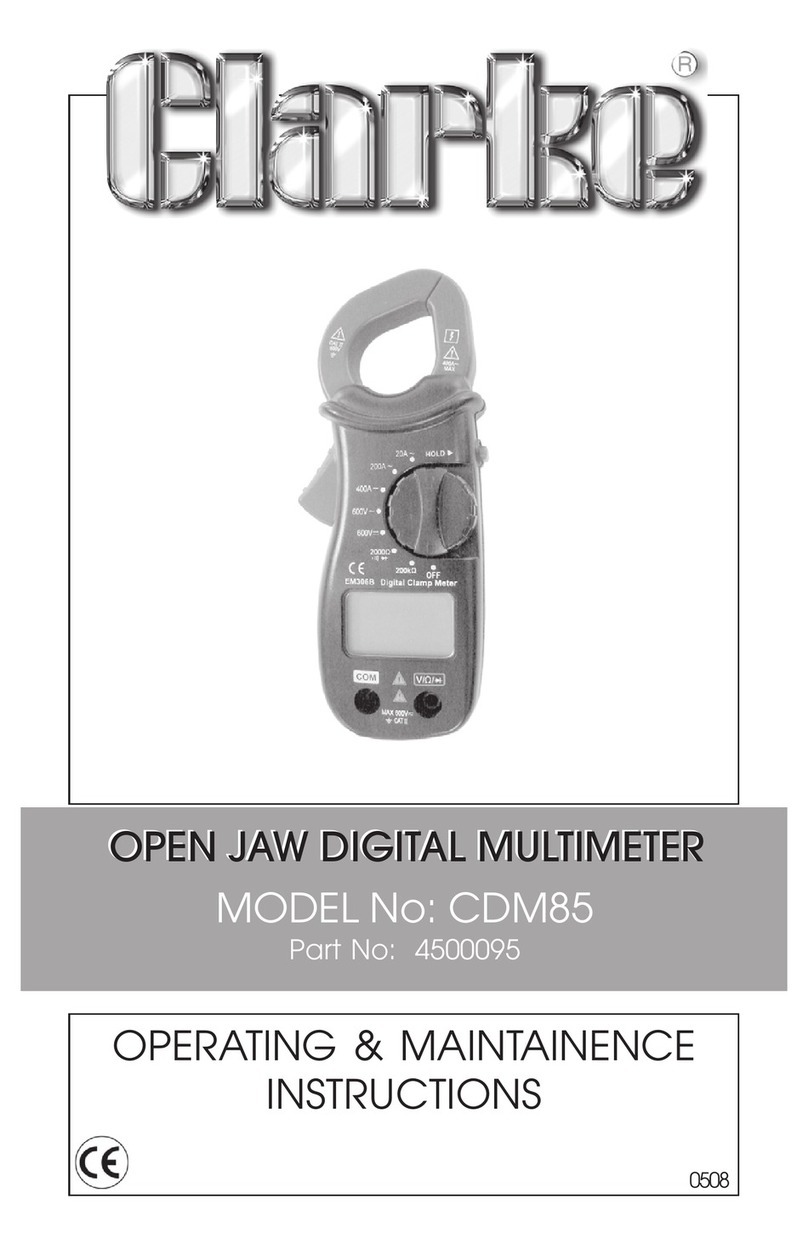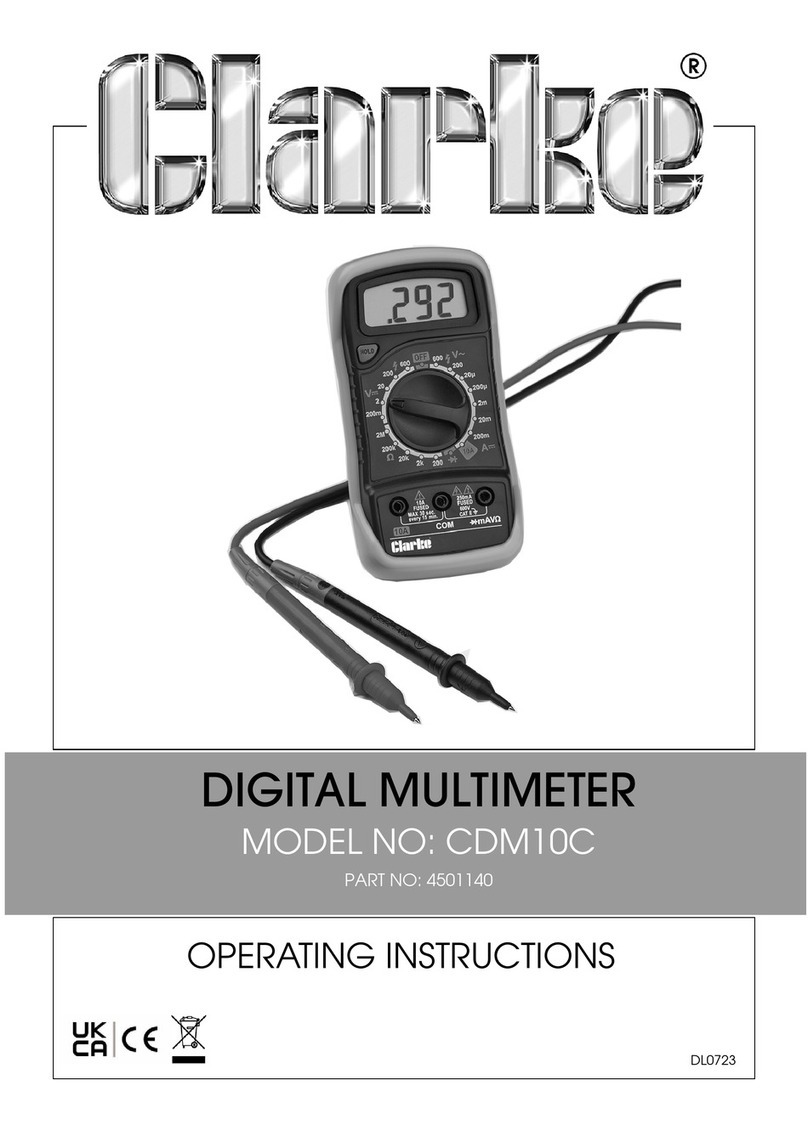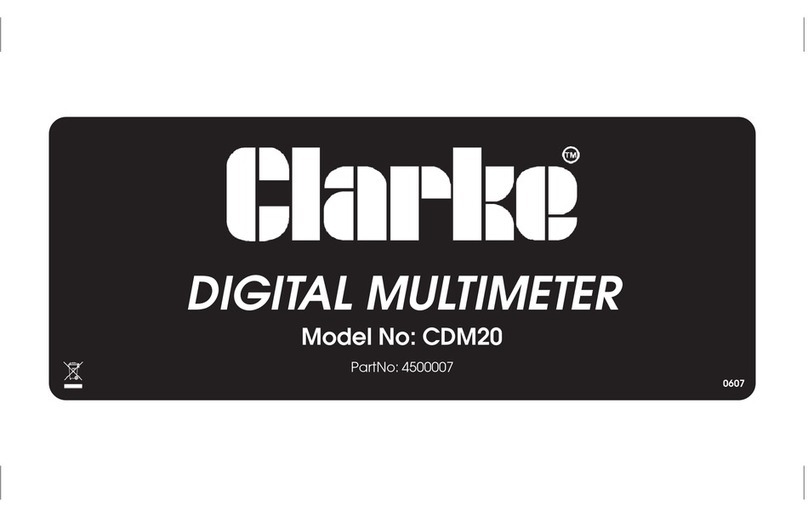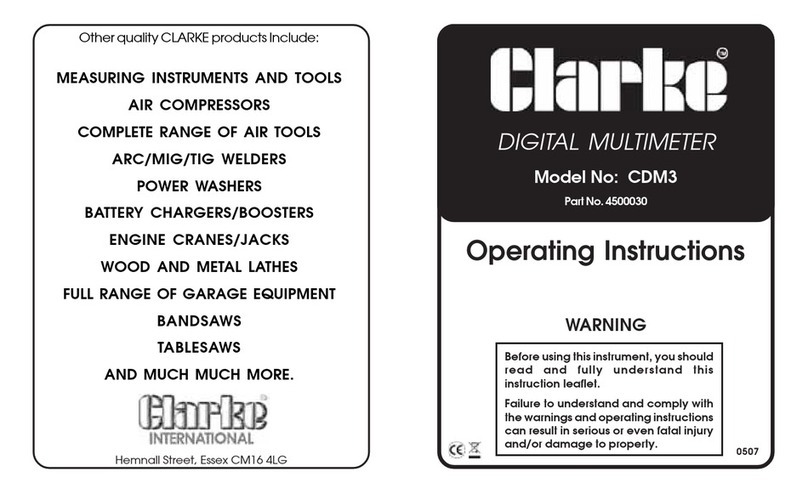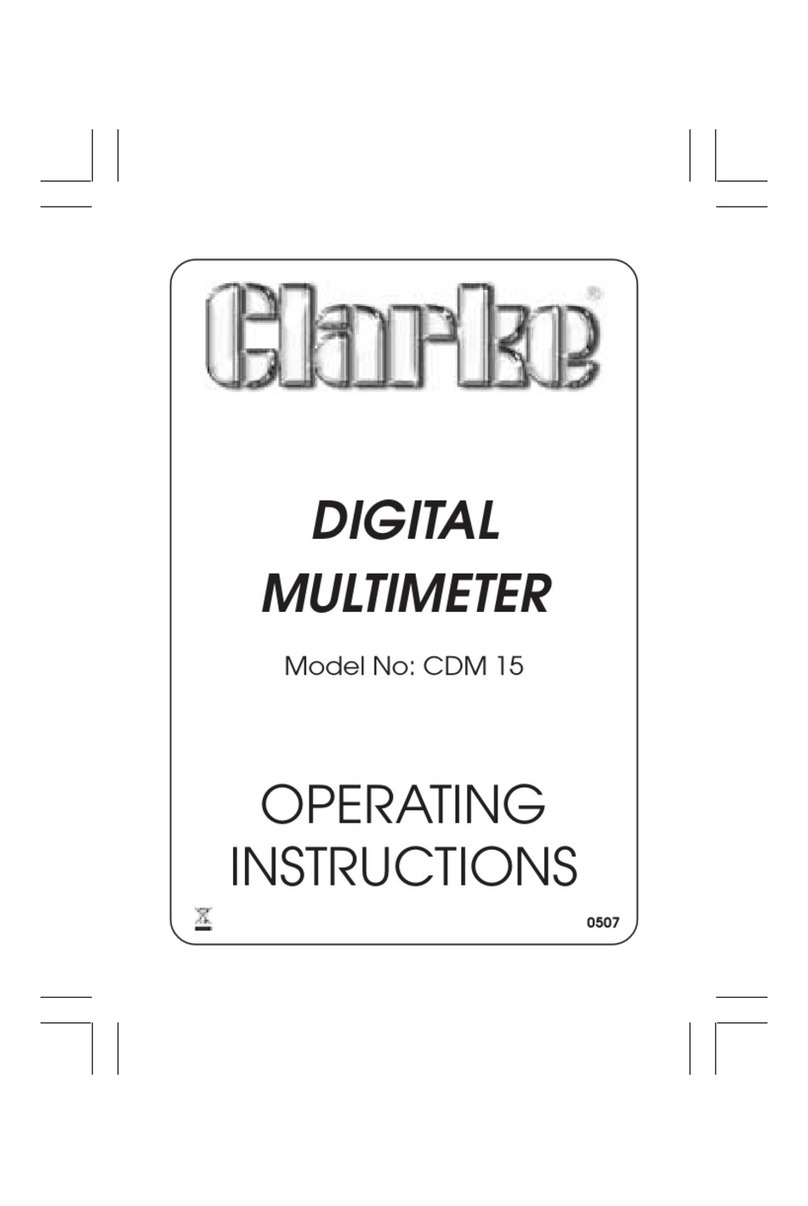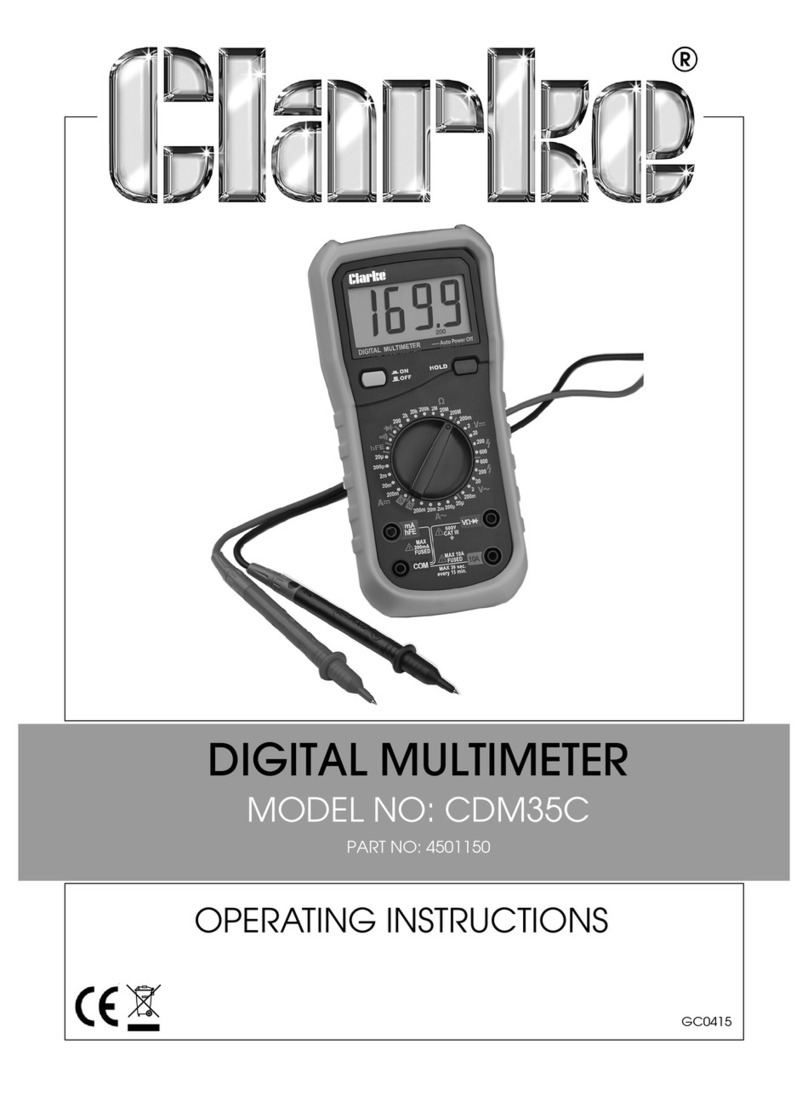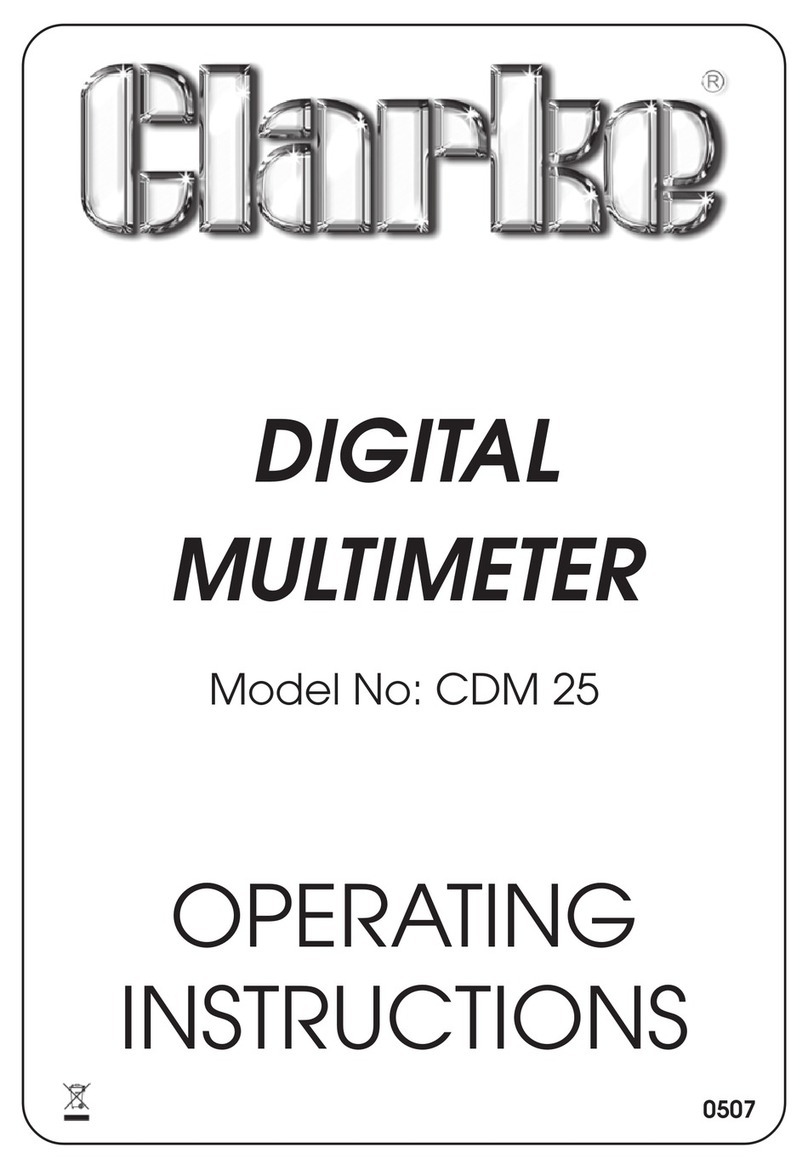Thank you for purchasing this Clarke Multi-Range Digital Multimeter.
This instrument is a compact, rugged, battery operated hand held, digital multimeter.
It is designed to measure AC and DC voltage, AC and DC current, Resistance, Diode,
Capacitance, for testing Transistors, and has an Audible Continuity function. The
display is a 3¾ digit, 3260 count LCD, and a linear bargraph. The dual-speed A-D
converter ensures a high speed, accurate performance. It is an ideal instrument for
use in the field, workshops, and for hobby and home applications.
GUARANTEE
This product is guaranteed against faults in manufacture for 12 months from purchase
date. Keep your receipt as proof of purchase. This guarantee is invalid if the product
has been abused or tampered with in any way, or not used for the purpose for
which it is intended. The reason for return must be clearly stated. This guarantee
does not affect your statutory rights.
SAFETY
Read this information before using the meter, taking special care regarding any
WARNING or IMPORTANT notices. The following safe practices and proper operating
procedures should be followed when using any multimeter:
• Inspect the test leads for insulation damage or exposed metal. Damaged leads
should be replaced.
• Select the proper function and range for your measurement.
• Avoid severe shocks and do not drop the multimeter.
• Do not allow the meter to be used if it is damaged or if its safety is impaired.
• WARNING: TO AVOID ELECTRIC SHOCK, USE CAUTION WHEN WORKING ABOVE
40V DC OR 25V AC RMS. SUCH VOLTAGES POSE A SHOCK HAZARD.
• Electrically disconnect the live, or hot, test lead before disconnecting the
common test lead.
• Follow all equipment safety procedures. Disconnect the input power and
discharge all high-voltage capacitors through a protective impedance before
testing in Ωand with the multimeter.
• Avoid working alone.
• When making a current measurement, turn the power off before connecting
the multimeter in the circuit. Overloading a current shunt will cause excessive heat.
• When measuring transformer secondary or motor’ winding current, check the
multimeter fuses first.
• When testing circuits take extra care not to touch any bare metal including the
ends of the test probes.
• The use of makeshift fuses and the short-circuiting of fuse holders is prohibited.
• Whenever it is likely that the protection has been impaired, the meter shall be
made inoperative and be secured against any unintended operation.
• Never attempt to measure a voltage or current higher than the maximum rating
of the meter.
Continuity/Diode Measurement
1. Connect the BLACk?test lead to the COM jack and the RED test lead to
the V/Ω/F jack.
2. Set the FUNCTION switch to the Position and push the Button to select
continuity or diode test mode.
3. In continuity testing, if the resistance is less than 20Ω, the built in buzzer will sound.
4. If testing diodes, connect the test leads across the diode under test, (red to the
anode). Display shows the approx forward voltage of this diode.
Transistor hFE Test
1. Set the FUNCTION switch to the hFE range.
2. Determine whether the transistor is NPN or PNP and locate the Emitter, Base and
Collector leads. Insert the leads into the proper holes in the socket on the front
panel.
3. Display will read approx. hFE value at the test condition/Base Current l0µA
VCE 3.2V
Measuring Range Control Button
AC/DC voltage AC/DC current ranges (µA and mA only),
Resistance and Frequency, can be set manually using this feature as follows.
1. Switching power ON, or changing FUNCTION, will set the Measuring Range to
automatic mode.
2. To select “Manual”, press range button (1) once, briefly. The letters “R-H” will
appear on the LED.
By pressing range button (1) again, briefly, (less than 1 sec), the range will change as
seen by the decimal point on the scale, moving to indicate xl00 xl000 etc. Pressing
the same button for approx 3 seconds, will return to “auto” mode.
CMD50 - Page10 CMD50 - Page3
